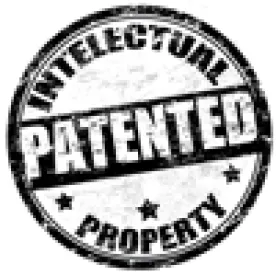Addressing obviousness issues in the context of an ex parte reexamination, the US Court of Appeals for the Federal Circuit upheld a Patent Trial and Appeal Board (PTAB or Board) holding that certain claims covering white LEDs were rendered obvious by a combination of three prior art references. In re Cree Inc., Case No. 15-1365 (Fed. Cir., Mar. 21, 2016) (Bryson, J).
Cree is a manufacturer of LED light bulbs and holds a patent on a device that generates white light by downconverting light from a blue LED. The downconversion is carried out with luminophoric materials such as phosphors, which convert light by either fluorescence or phosphorescence.
Cree’s patent was subject to ex parte reexamination, during which the examiner rejected all claims as obvious over various prior art combinations. One such combination was premised on a 1970 patent that created white light by downconverting blue laser light using phosphors. The examiner combined that laser patent with a 1974 patent for a violet LED that suggested that the violet light could be converted with phosphors, and a 1993 patent for a major breakthrough in high-powered blue LEDs, for which the inventor received a Nobel Prize. The Board agreed with the examiner and concluded that Cree’s patent merely claimed a predictable application of the high-powered blue LEDs. Cree appealed.
On appeal, Cree first argued that the Board wrongly concluded that downconversion of blue LED light was already known. The Federal Circuit disagreed, finding the Board’s conclusion to be that downconversion generally was known, regardless of the particular light source used. Cree next claimed error in the Board’s finding of an admission by Cree’s experts that downconversion was known in the art. According to the Federal Circuit, the experts’ position that downconversion was known, but disfavored, nevertheless amounted to an acknowledgement that it was known. Cree also argued that the Board failed to articulate any motivation to combine. Again the Court disagreed, noting the Board’s finding that the availability of the breakthrough blue LED constituted the motivation. Cree had disputed a similar finding at the Board by pointing to differences between broader spectrum LED light compared to narrower spectrum laser light, but the Court found that these differences would have been taken into account by the well-understood process of selecting the appropriate phosphors.
Cree also argued that the Board improperly dismissed Cree’s asserted secondary considerations of industry praise, licensing and commercial success. Once again the Federal Circuit disagreed. The Court dismissed the industry praise as mere self-serving statements; the statements were by third parties, but praised their own independent work on the same technology. The Court rejected the licensing evidence as lacking the required nexus to the claimed invention and noted that the licenses included broad cross licenses and litigation settlements. The Court likewise dismissed Cree’s commercial success arguments as failing to provide any evidence tying the sales to the claimed invention.




 />i
/>i

